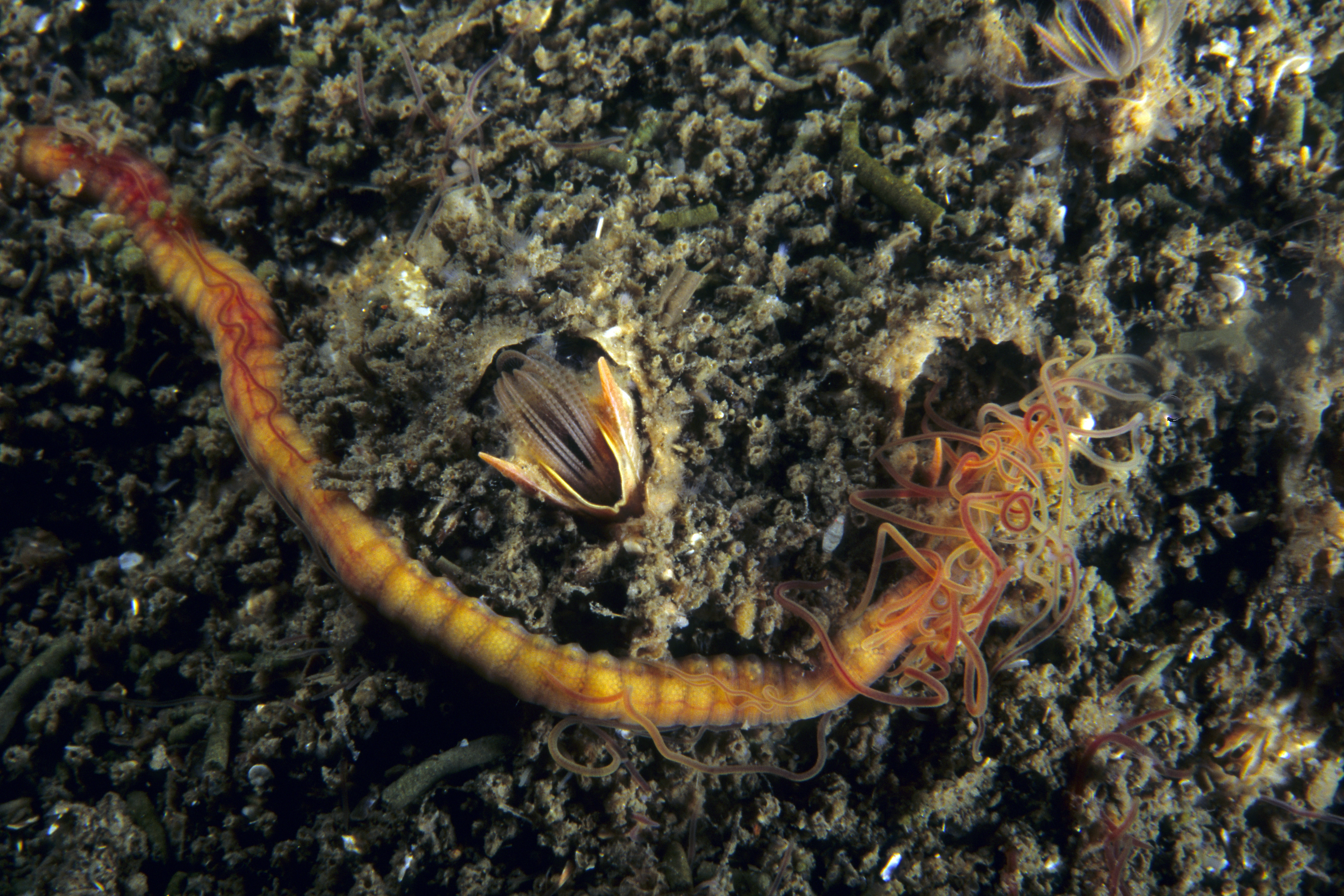Cirratulidae
Cirratulids vary in size from one to twenty centimetres long. They are elongated, cylindrical worms, without conspicuous parapodia. Cirratulids have grooved anterior tentacles and long filamentous branchiae along the body. They are mostly burrowers in soft sediments, but some live in rock crevices.
- Innhold
- Characteristics
- Recommended citation
Characteristics
Cirratulids are elongated, cylindrical worms, with numerous segments and reduced or absent parapodia. They have grooved anterior tentacles and long filamentous branchiae along the body, that are of bright colours when alive. These features distinguish them from members of Terebellidae, that have tentacles and filaments only on the anterior-most segments. The Cirratulids usually live buried with only the writhing branchial filaments visible. The anterior thoracic region is sometimes expanded, with narrower segments, as are sometimes also the last few segments. Cirratulids vary in size from one to twenty centimetres long. Most species are burrowers in soft sediments, but some lives in rock crevices. The chaetae, or bristles, are simple capillaries, usually with hooks, and emerge directly from the body wall.
Recommended citation
Grosse M. Cirratulidae Ryckholt P de, 1851. www.artsdatabanken.no/Pages/313948. Downloaded <year-month-day>.

